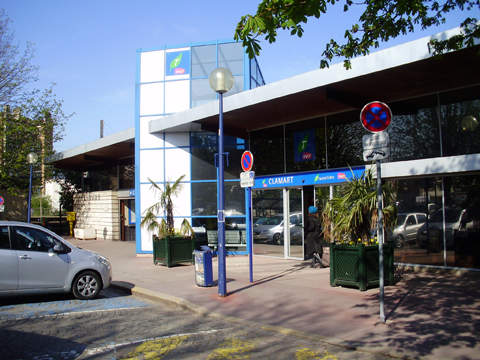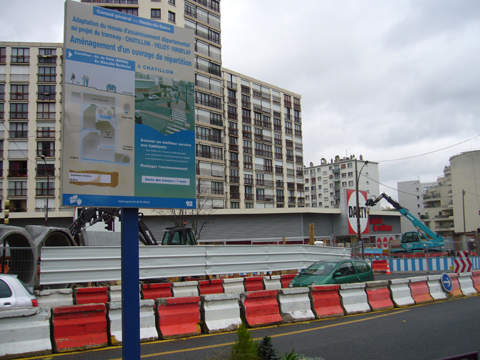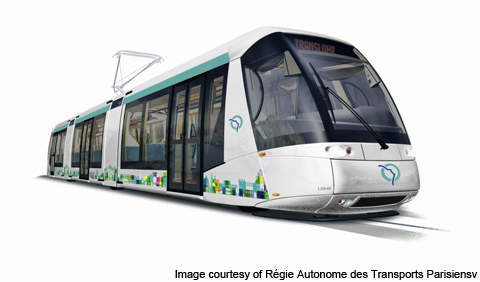The T6 is a new tramline that is being constructed in the suburbs of Paris in the General Council regions of Hauts-de-Seine and Yvelines. It will be owned by the General Councils of Hauts-de-Seine and Yvelines and the operator Régie Autonome des Transports Parisiens (RATP).
It will provide improved transportation facilities between the two suburban Councils while integrating with Underground Line 13, Réseau Express Régional (RER) Line C and lines of Transilien, the French National Railway Company.
Preconstruction works commenced in 2007 and construction works started in 2010. The project is scheduled for completion in 2015.
RATP currently operates four tramlines (T1, T2, T3 and T4) in Paris, while four more lines (T5, T6, T7 and T8) are planned to be opened by 2014.
Line routes
The 14km-long route will be between Chatillion and Viroflay, and will pass through the municipalities of Clamart, Fontenay-aux-Roses, Meudon and Velizy-Villacoublay.
About 1.6km of the 14.6km route will be underground between Velizy-Villacoublay and Viroflay municipalities.
In the Yvelines region near Sembat Street, the tramway will pass along the side of the road. The median at the street will be completely refurbished to provide space for pedestrians and bicycles.
Project
The project is being undertaken with the aim of redistributing the increasing motor traffic and providing space for various modes of transportation. It was registered with the State Region of France in 2000 and was approved by Syndicat des Transports (STIF), the transport authority of Lle-de-France, in 2002.
Preliminary studies and design were carried out during 2002-2005 followed by a public announcement in 2006.
Financing
The estimated cost of the project is €385m excluding the taxes and cost of rolling stock. The project is funded by the State (16%), Lle-de-France (50%), General Counsel of Hauts-de-Seine (20%), General Counsel of Yvelines (13%) and RATP (1%).
The first financial agreement was notified by STIF in August 2007, followed by the second and third in November 2008 and December 2009 respectively.
Construction
The 14km route is divided into 46 sections of 150m-300m each for the purpose of construction.
The surface works include construction of platforms, development of road and public spaces, installation of street benches, power supplies, rail guide, 12 posts for overhead power lines, signage, and construction of a maintenance and storage facility at Velizy-Villacoublay. The surface section is scheduled for completion in 2013 and opening in 2014.
Construction of the underground section is scheduled to start in 2011 and will involve tunnel drilling, platform constructions, installation of furniture, 25km of rail guide, signage and creation of open spaces. This section is expected to open in 2015.
Transportation infrastructure and urban development works will be performed by the respective General Councils in their territories. RATP is responsible for the procurement of rolling stock, site maintenance and storage.
Infrastructure
The tramway will feature a total of 21 stations, including 12 in the Hauts-de-Seine region and nine in the Yvelines Council. The platforms in the Hauts-de-Seine region will be located in the centre of the road with space reserved on either sides of the platform for motor traffic.
There will be underground stations at Viroflay Rive Gauche and Rive Droite. The platforms of these stations will be 20m deep from the surface.
Intersections at Paris Avenue / Boulevard de Stalingrad, Place de la Division Leclerc and Church of St. Francis de Sales will be re-designed to accommodate the tram, pedestrian, motor traffic and bicycle path.
The project will also feature 11 miles of bicycle path with parking space and landscapes on both the sides.
Signalling and communications
The signalling will include co-ordination of road and tram signals, lights with sounds for pedestrian crossing at the signals and supervision systems.
Rolling stock
The T6 project requires a rolling stock investment of €134m. A contract worth €171.6m was awarded to Lohr Industrie and ETF-EUROVIA Railway Works in June 2010 for the supply of 28 Translohr STE 6 type trams.
The first tram will be delivered in June 2013 and the remaining 27 in September 2014.
The tram can accommodate 250 passengers including 60 seated and two wheel chairs. The low floor facilitates easy access for passengers with low mobility. Other features include air conditioning, display screens and announcement systems.
The trams will travel at a speed of 20km/h and will cover the entire route in 40 minutes. They will be operated at a headway of four minutes during peak hours and seven minutes during non-peak hours.










